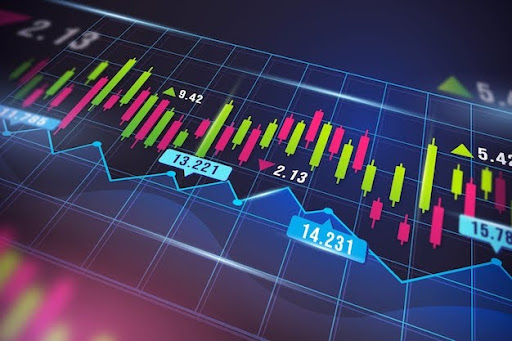Exploring Leverage Options in CFD Trading with Traditional Forex Brokers
(Investorideas.com Newswire) Leverage is the double-edged sword that makes Contract for Difference (CFD) trading both attractive and dangerous. One click can control a position worth 30, 50, or even 500 times the cash in your account. For intermediate to advanced retail traders, understanding exactly how traditional Forex brokers structure and police that leverage is critical. Misjudge it and you could vaporize your balance during a routine pullback; use it wisely and you can magnify returns without tying up large amounts of capital.

Leverage in CFDs vs. Spot Forex: Same Concept, Subtle Differences
Spot Forex already provides the margin, and the CFDs add a level of flexibility. A spot EUR/USD operation is a buying and selling operation in which there is an exchange of currencies, typically on a leverage of 30:1 to European clients. A CFD in the EUR/USD, by contrast, is a synthetic contract that is an easy reflection of the price of the underlying pair without the necessity of taking delivery. Trading CFD with traditional Forex brokers allows investors to access this derivative flexibility while often benefiting from higher leverage options. Since it is a derivative, the broker is able to adjust leverage ratios more aggressively, typically providing 100:1 or even higher on professional accounts outside highly controlled zones.
For the trader, the math is identical:
- Margin requirement = Notional position ÷ Leverage ratio.
- Effective leverage = Notional position ÷ Account equity.
What changes is the broker’s freedom to customize those ratios. Under ESMA rules, a licensed European broker must cap major Forex CFDs at 30:1 and equities at 5:1 for retail accounts. Move the same account to a non-EU broker, and you may see 200:1 on majors and 20:1 on single-stock CFDs. The concept hasn’t changed; only the policy ceiling has.
How Traditional Forex Brokers Allocate Leverage
Even within one jurisdiction, brokers slice leverage in several dimensions so they can balance client appeal against institutional risk. Understanding those moving parts helps you translate an attractive headline ratio into a realistic risk profile.
Tiered Margin Framework
Most brokers use “notional tiers” to prevent a single trader from endangering their own balance sheet. For example, the first 100,000 of EUR/USD notional value might carry 400:1, then the next 900,000 shrinks to 200:1, and anything above $1 million drops to 100:1. This stepped structure is rarely visible on landing pages; you find it buried in the margin schedule PDF. Its purpose is simple: to contain catastrophic slippage during surprise events such as flash crashes or unexpected central-bank announcements.
Brokers also segment leverage by asset class. Major Forex pairs get the highest ratios because they trade in deep, highly liquid markets. Single-stock CFDs drop to 5:1 or 20:1 because equities can gap violently at the opening bell. Gold and oil often sit in the middle ground, reflecting both strong liquidity and frequent geopolitical spikes.
Event-Driven Adjustments
Leverage is not always static. Around high-volatility events, think U.S. non-farm payrolls or Fed rate decisions, brokers may temporarily double margin requirements. Some platforms automate the shift: the system scans an economic calendar API and throttles new positions thirty minutes before a red-flag event. You should build room for those temporary margin calls into your position sizing; otherwise, a well-placed trade may be liquidated purely because the broker raised requirements mid-flight.
After-hours and weekend risk creates a similar clampdown. Many brokers drop leverage by half on Friday evenings to protect against Monday gaps. They do not market it aggressively, so double-check the fine print if you like leaving positions open over the weekend.
Building a Personal Risk Architecture
Knowing the broker’s rules is only half of the job; the other half is crafting your own guardrails. A mature risk architecture forces you to treat leverage as a tactical amplifier, not a permanent life support system for undersized accounts.
Effective Leverage Audits
The fastest way to sabotage a promising strategy is to ignore “account-level” leverage, total notional exposure divided by equity, not just per-trade leverage. Many professional traders self-impose a 10:1 ceiling even when the platform offers 200:1. MetaTrader’s Exposure tab or cTrader’s Dashboard lets you monitor this in real time. If your effective leverage creeps higher during correlated trades, say, several GBP pairs at once, reduce position size or hedge exposure before the market does it for you through a margin call.
Financing Costs and Drawdown Math
High leverage magnifies swap rates and overnight financing charges. A 3-pip daily swap on a 100:1 leveraged EUR/USD long position compounds rapidly, turning break-even charts into steady drips of red. Worse, financing often spikes during crisis periods, the exact moments when you least want extra costs. Combine that with drawdown arithmetic, a 50% loss requires a 100% gain to recover, and you can see why small overnight charges morph into account-level threats over weeks of trading.
Instituting hard stop-losses well above the broker’s margin-call threshold helps. If your broker liquidates at a 50% margin, build exits around 70-80% to avoid forced closures at inopportune prices. This gap shields you from system-wide liquidations that can slip several pips.

Selecting a Broker: A Practical Filter
Leverage often dominates promotional material, but disciplined traders dig deeper. An “all-in-one” broker evaluation includes transparency, execution quality, and the ability to adapt during extreme volatility.
Transparency and Communication
A broker worth your deposit sends proactive alerts about leverage changes. Look for platforms that publish policy updates at least 24 hours in advance and display real-time margin notifications in the trading terminal. Read client agreements for commitments on negative balance protection. Remember the 2015 Swiss-franc shock, when brokers worldwide registered millions in client losses within minutes, the firms that handled it best communicated margin increases before the chaos.
Stress-Testing Tools
Some platforms embed Monte Carlo simulations or historical VAR scenarios, letting you see how a given leverage level would have fared during events like the 2020 oil futures crash. Use these tools to test worst-case drawdowns instead of relying on optimism. The difference between surviving and blowing up often lies in a handful of tail-risk episodes.
Finally, layer subjective research: check how the broker segregates funds, examine its balance sheet, and skim trading forums for real-world withdrawal experiences. High leverage is irrelevant if you cannot retrieve profits quickly.
Conclusion: Turning Ratios into Strategy
Leverage is neither friend nor foe; it is a neutral amplifier that does exactly what you instruct it to do. The real secret lies in understanding how the broker structures leverage from tiered margin schedules to event-based cuts and in designing personal risk rules that survive the broker’s periodic changes. Resist the temptation to chase the highest headline ratio. Focus on effective leverage, predictable financing costs, and robust stop-loss discipline.
A useful way to think about leverage is to treat every ratio as a line of credit that the broker can reduce without notice. Build your trading plan so that, if margin requirements were halved tomorrow, you would still be in business. That sober thinking turns leverage from a silent saboteur into a strategic advantage.
According to the Bank for International Settlements (BIS), the global foreign exchange (FX) market reached a record daily turnover of $7.5 trillion in April 2022, marking a 14% increase from $6.6 trillion in 2019, a testament to how many individual traders compete in this arena. The secret of surviving them is not to be as fast as they are, but to have leverage like a scalpel. Nail that, and you will make a mighty, but dangerous weapon, an obedient companion in your trade voyage.








